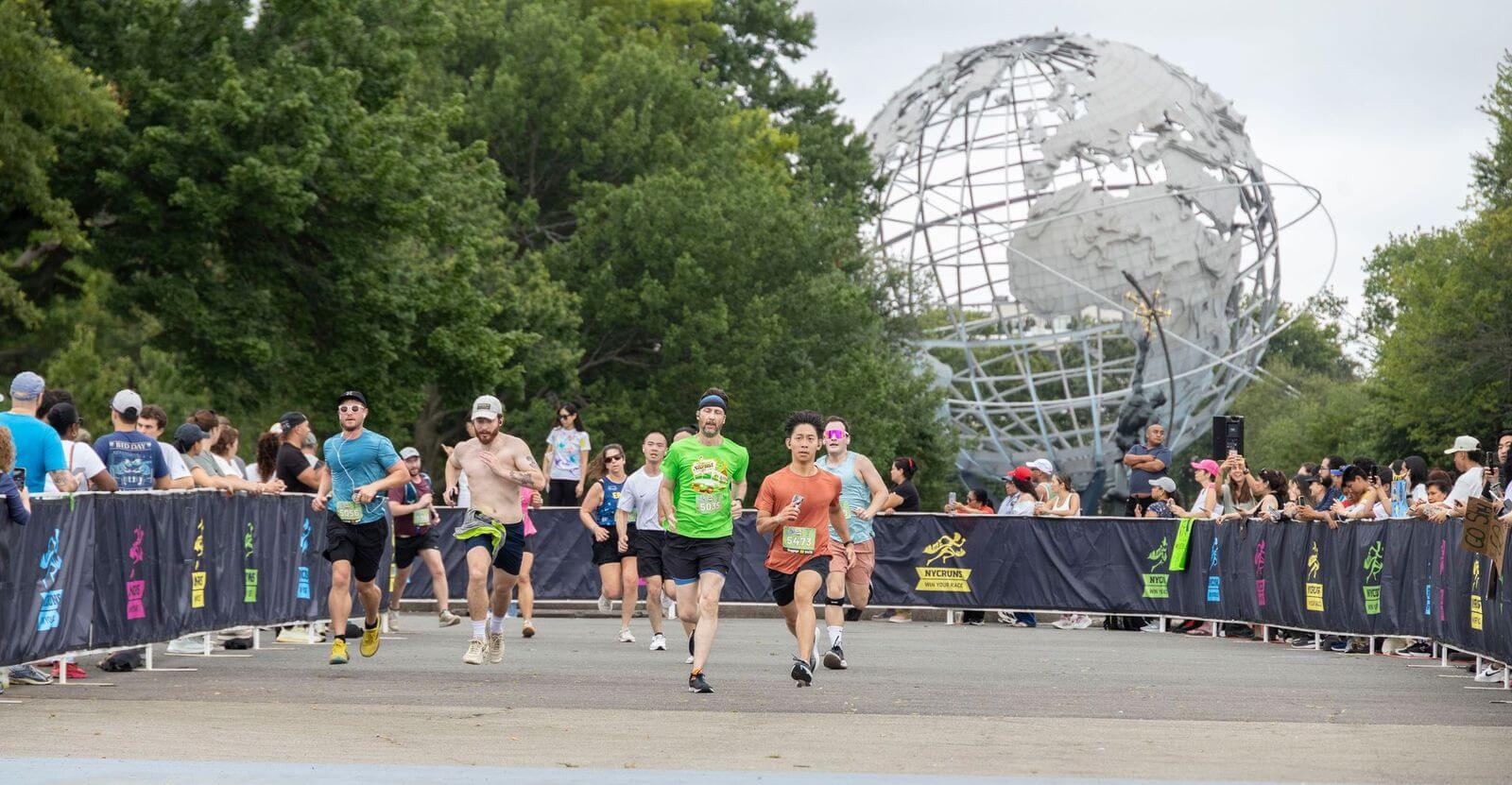
 Brooklyn, NYC (July 15, 2025) – The NYCRUNS Ice Cream Social Race Series Presented by Samsung Health hit the summer starting line this past weekend in Queens, featuring a new presenting partner, a new location, more runners, and of course, lots of tasty ice cream treats.
Brooklyn, NYC (July 15, 2025) – The NYCRUNS Ice Cream Social Race Series Presented by Samsung Health hit the summer starting line this past weekend in Queens, featuring a new presenting partner, a new location, more runners, and of course, lots of tasty ice cream treats.
“We’re excited to welcome Samsung Health and their Galaxy wearables to our multi-borough ice cream social race series,” said Steve Lastoe, CEO & Founder of NYCRUNS, the Brooklyn-based running organization that produces two dozen races year-round, including the flagship NYCRUNS Brooklyn Experience Half Marathon, one of the largest half marathons in the nation.
“The ice cream social races are some of our most popular events of the year. It’s a fun summer running vibe and the perfect place for Samsung Health to connect with our running community on rest and wellness,” added Lastoe.
At every race, Samsung Health will be catering to runners at the Samsung Rest Club — a run club that’s all about rest and recovery. Runners can take advantage of the latest devices and tools unveiled at Galaxy Unpacked, including the Galaxy Watch8 series and its innovative Galaxy AI features. By using Galaxy Watch, users can improve their rest and recovery through Samsung’s innovative sleep coaching programs — which can help you find your ideal bedtime [1] and monitor how well you have been sleeping. These metrics and many others also allow users to receive a personalized Energy Score [2], which provides a daily assessment of your mental and physical readiness. To take your runs to the next level, users can even try out the all-new Running Coach feature [3]: simply wear your Galaxy Watch8, run for 12 minutes, and get a running level (1-10), along with a customized training plan for a 5K, 10K, half marathon, or full marathon.
Queens was the newest addition to the cool summer series that stretches across NYC and features four races and multiple distance options. Below is the schedule of races in July and August:
Samsung Health joins an impressive group of partners who have joined the NYCRUNS family over the past year, ranging from emerging global brands to popular local businesses, including Oatly, smartwater, NOBULL, Zenni, AMC, Threes Brewing, and many more.
For more information on NYCRUNS and a full schedule of events, visit nycruns.com.
About NYCRUNS
Now celebrating its 15th year of racing, NYCRUNS has become one of the nation’s premier independent race organizers recognized for producing serious races that don’t take themselves so seriously. The Brooklyn-based, runner-centric organization hosts approximately two dozen events annually, including the flagship NYCRUNS Brooklyn Experience Half Marathon. Hundreds of thousands of runners have taken part in NYCRUNS races, which are gathering spots for hundreds of NYC running clubs and crews and provide meaningful support to countless causes and local businesses.
About Samsung Electronics America, Inc.
Headquartered in Englewood Cliffs, N.J., Samsung Electronics America, Inc. (SEA), the U.S. Sales and Marketing subsidiary, is a leader in mobile technologies, consumer electronics, home appliances, enterprise solutions and networks systems. For more than four decades, Samsung has driven innovation, economic growth and workforce opportunity across the United States—investing over $100 billion and employing more than 20,000 people nationwide. By integrating our large portfolio of products, services and AI technology, we’re creating smarter, sustainable and more connected experiences that empower people to live better. SEA is a wholly owned subsidiary of Samsung Electronics Co., Ltd. To learn more, visit Samsung.com. For the latest news, visit news.samsung.com/us.
—-
[1] Requires compatible Samsung Galaxy phone, Samsung Health app and Samsung account. Bedtime guidance is available on Android phone (Android 11 and above) requires Samsung Health app (v6.30.2 or later). It is based on 3 days of sleep analysis of user’s circadian rhythm and sleep pressure.
[2] Galaxy AI features track data and require compatible Samsung Galaxy phone, Samsung Health app and Samsung account.
[3] Service will only be available with Galaxy Watch7 Series or later released Galaxy Watch Series. Available for outdoor running only; requires at least 12 minutes of running with GPS on and initial setup. Galaxy AI features track data and require compatible Samsung Galaxy phone, Samsung Health app and Samsung account.